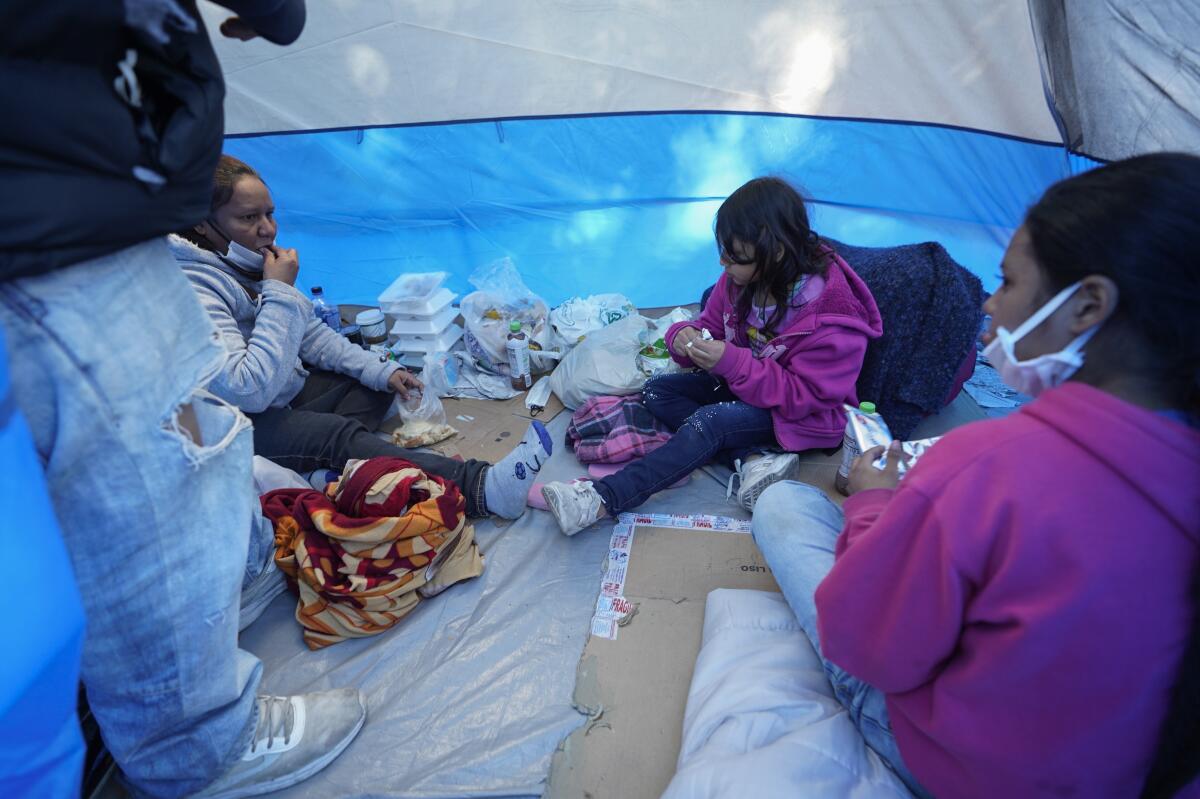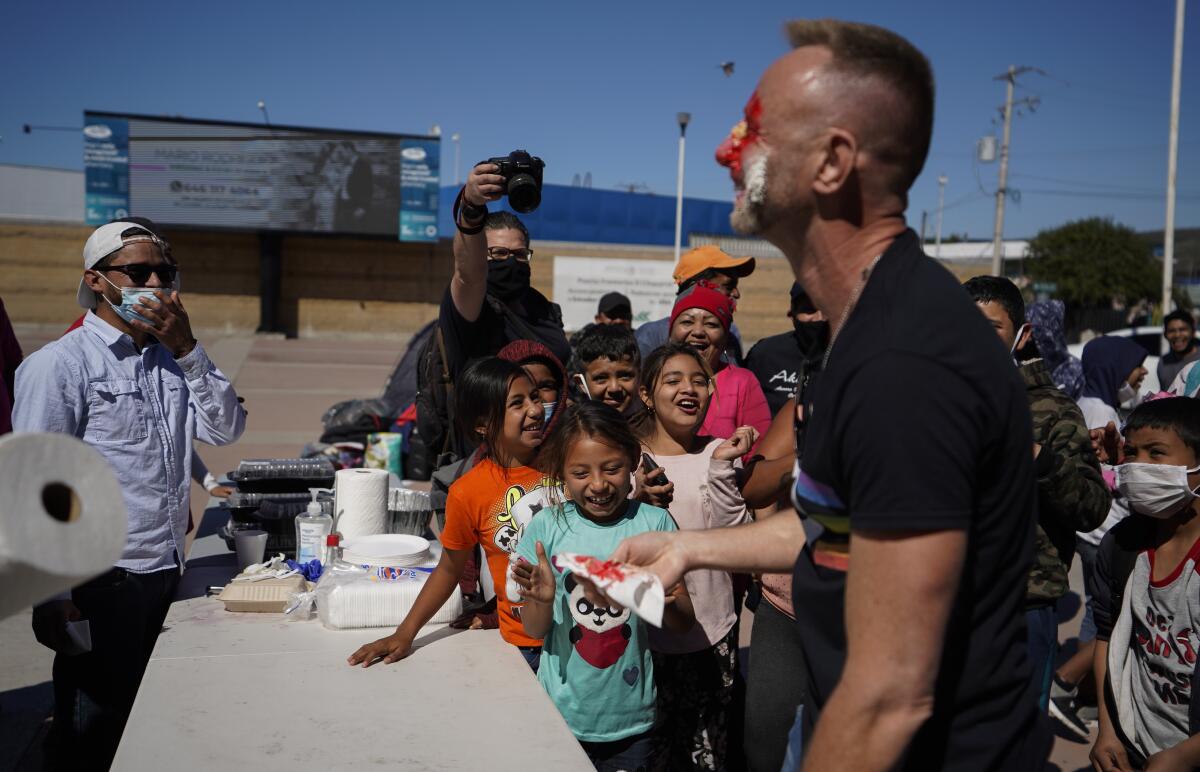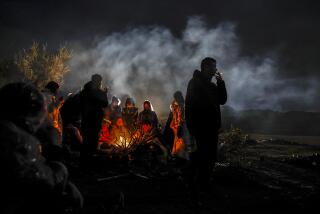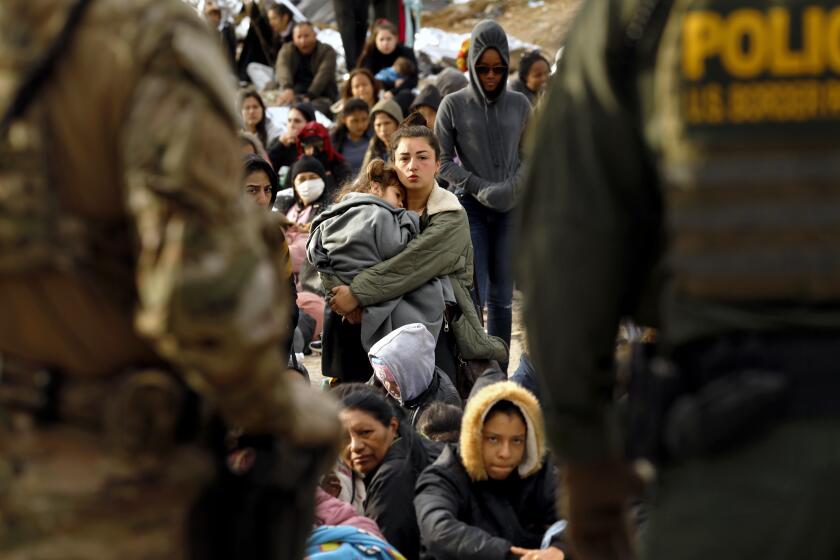Asylum seekers, desperate for help, camp outside Tijuana port of entry

The Tijuana plaza just outside the San Ysidro Port of Entry has once again become a hub for asylum seekers looking for a chance at requesting refuge in the United States.
As of Wednesday morning, there were more than 50 tents pitched in the Chaparral plaza, where the western pedestrian crossing of the port of entry connects with San Diego’s southern neighbor.
The western part of the port of entry has been closed during the pandemic, and the once-bustling plaza where asylum seekers gathered every morning amid commuting workers and tourists became mostly deserted until last week.
That’s when people began sleeping there after the Biden administration announced that it would start processing certain asylum seekers into the United States — a change from the Trump administration’s increasingly restrictive practices at the border.
More asylum seekers come during the day to learn if there have been any more changes to border policies that still exclude most of them from the possibility of beginning their requests for protection.
One Honduran woman whose tent pressed up against the colorful Tijuana sign that stretches along the plaza said she was willing to stay there for years in order to be let in. She is not being identified because of her vulnerable situation.
“We will be here as long as it takes,” the woman said in Spanish.

Volunteers from Casa de Luz, based in Playas in Tijuana, have begun serving free meals in the plaza, and attorneys with Al Otro Lado, a legal services organization that has long supported asylum seekers in Tijuana, have set up tables where they can answer questions about the recent changes.
An estimated 26,000 asylum seekers who were returned to Mexico under the Trump administration’s Migrant Protection Protocols — known widely as the “Remain in Mexico” program — and still have active immigration court cases in the U.S. are now eligible to enter the country. The Biden administration processed the first 25 on Friday at the San Ysidro Port of Entry, and officials began processing at a port of entry in Texas on Wednesday as well.
To cross, those asylum seekers must register online with a United Nations agency to receive a date for COVID-19 testing and for entry.
But many asylum seekers are stuck in Mexico because of other Trump administration policies, and those restrictions remain in place.
Guerline Jozef of Haitian Bridge Alliance, another organization that has been trying to provide information to asylum seekers at the plaza, said the best analogy for the situation was that the Biden administration had sprinkled flowers on what was already a huge pile of donkey manure. People were excited by the flowers, but the pile had not changed, she said.
“The confusion within the community itself is what creates extreme vulnerability,” Jozef said. “There is a notion that there’s a crisis at the border, which is not true. What is happening at the border is a need for guidance, direction and a plan. What we need is to be able to provide relief and protections for people who have made the journey in search of safety, in search of asylum, in search of refuge.”
The Biden administration has emphasized that anyone who tries to cross into the United States will be immediately expelled, as they were under the Trump administration.
“It is important to underscore that this process will take time, that we are ensuring public health and safety, and that individuals should register virtually to determine if they are eligible for processing under this program,” said Alejandro N. Mayorkas, secretary of the Department of Homeland Security, in a Friday news release. “Physical presence at a port of entry is not the way to gain access to this phased effort, and people should not make the perilous journey to the border.”
But for many camped out at Chaparral, waiting outside the port of entry is the only hope they have left.
The Honduran woman standing in her tent said she had already tried to cross illegally into the United States with her two children. Border officials fingerprinted her and her teenage daughter and then brought them back to Tijuana.
She fled her country in the summer of 2019 because her husband routinely beat her and the children, she said, and on several occasions tried to kill her or have her killed.
A few days ago, she bumped into her cousin in the Tijuana plaza and they began sharing a tent.
Many families are similarly sharing tents, some with people they just met.

The father of a Honduran family of six said they decided to share a tent with another woman and her daughter so that the pastor giving out tents would give them a bigger one. The man and his family had been threatened in Tijuana where they were living before and determined they would be better off in the border camp.
One of his daughters will turn 14 on Thursday.
“And look where we are,” the father said with tears in his eyes.
He hadn’t wanted to leave his country, he said, but extortion on his small business led to death threats. And because of corruption that goes up to the highest ranking officials in the country, he said, his family didn’t have any recourse but to flee.
So they made their way north, the mother and children braiding hair along the way to earn money for food.
The family members have been sleeping on cardboard inside their tent. They have one sleeping bag and a small blanket to share among all of them. The father has used a garbage bag to keep himself warm when the temperature drops at night.
“I don’t want my children to be here in the cold, for people to treat them like trash, but we didn’t have a choice,” he said before he and his children walked over to where a group of musicians was singing a corrido for President Biden.
Morrissey writes for the San Diego Union-Tribune.
More to Read
Start your day right
Sign up for Essential California for news, features and recommendations from the L.A. Times and beyond in your inbox six days a week.
You may occasionally receive promotional content from the Los Angeles Times.







